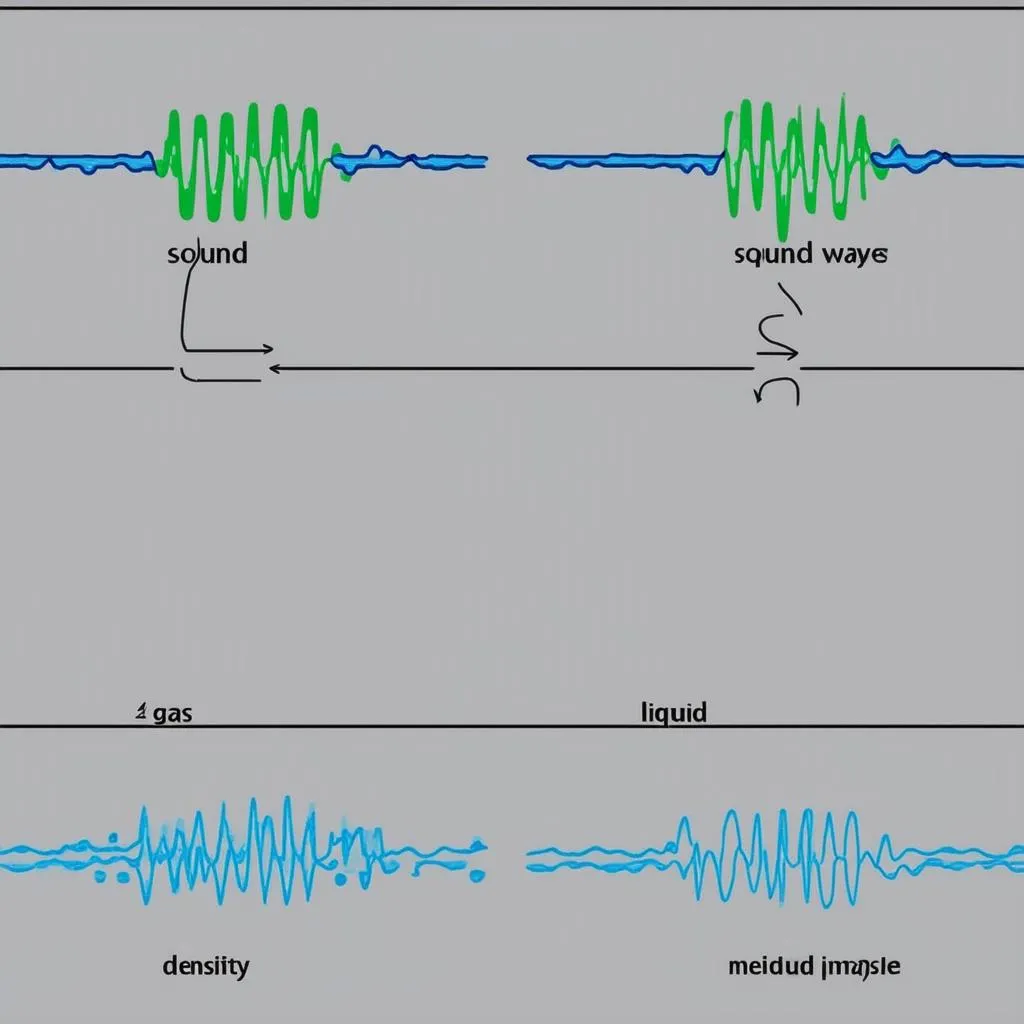Have you ever stood on the shore, mesmerized by the rhythmic crashing of waves against the sand? Or perhaps you’ve felt the ground tremble beneath your feet during an earthquake, a stark reminder of the immense power hidden within our planet. These awe-inspiring phenomena, along with the sound of music reaching our ears and the ripple effect when a pebble breaks the surface of a still pond, are all examples of a fascinating scientific concept: waves that travel through matter.
These waves, known as mechanical waves, are not just mesmerizing natural occurrences; they underpin our ability to experience the world around us. From the very act of speaking and hearing to the technology that allows us to communicate across continents, understanding mechanical waves unlocks a deeper understanding of the physical world and our place within it.
What Exactly is a Wave Traveling Through Matter?
In the simplest terms, a wave is a disturbance that carries energy without transferring matter. Imagine a line of dominoes – when you topple the first one, the energy travels down the line, causing each domino to fall in turn, yet the dominoes themselves don’t move along the line. This is analogous to how waves propagate.
A mechanical wave, specifically, is a wave that needs a medium to travel. This medium can be a solid, liquid, or gas. Let’s break down some key characteristics:
- Medium: The material through which the wave travels (e.g., air, water, a rope).
- Disturbance: The initial energy input that creates the wave (e.g., a vibrating object, a pebble dropped in water).
- Propagation: The way the wave travels through the medium, transferring energy as it goes.
Think about the experience of listening to music at a live concert. The sound waves generated by the instruments don’t transport the air itself to your ears; instead, they cause the air molecules to vibrate, and this vibration, this wave, carries the sound energy to your ears.
Types of Mechanical Waves: Transverse and Longitudinal
Mechanical waves can be further categorized into two main types:
1. Transverse Waves: In these waves, the particles in the medium move perpendicular to the direction the wave travels. Imagine holding one end of a rope and flicking your wrist up and down. The wave travels along the rope horizontally, but the individual parts of the rope move up and down.
2. Longitudinal Waves: Here, the particles in the medium move parallel to the direction the wave travels. Sound waves are a prime example. When you speak, your vocal cords vibrate, causing the air molecules to compress and expand in the same direction that the sound wave travels.
The Science of Sound: A Journey Through the Medium
Let’s delve a bit deeper into the fascinating world of sound, a prime example of a mechanical wave that shapes our daily lives. Imagine you’re standing on the bustling streets of Hanoi, Vietnam. The honking of motorbikes, the chatter of vendors, the rhythmic chanting from a nearby temple – all these sounds reach your ears through the magic of sound waves.
- Creation: Sound waves are produced by vibrations. The motorbike engine, the vendor’s vocal cords, the temple gong – all vibrate, causing the surrounding air molecules to vibrate as well.
- Propagation: These vibrations travel through the air as longitudinal waves, creating regions of high pressure (compressions) and low pressure (rarefactions). This pattern of compressions and rarefactions propagates outward from the source of the sound.
- Perception: When these waves reach your ear, they cause your eardrum to vibrate. These vibrations are then translated into electrical signals that your brain interprets as sound, allowing you to experience the vibrant tapestry of Hanoi’s soundscape.
 Mechanical Wave Example
Mechanical Wave Example
Traveling Through Different Mediums: Does Sound Change?
Sound waves need a medium to travel, and the type of medium affects their speed and behavior.
- Solids: Sound travels fastest through solids because the particles are packed closely together, allowing vibrations to transfer energy quickly. This is why placing your ear against a wall lets you hear sounds from the other side more clearly.
- Liquids: Sound travels slower in liquids than in solids, but still faster than in gases. Think about how sound travels underwater – it’s muffled but still audible.
- Gases: Sound travels slowest through gases as the molecules are more spread out. This is why sound travels slower at higher altitudes where the air is less dense.
 Sound Waves in Different Mediums
Sound Waves in Different Mediums
Exploring the World Through Mechanical Waves: Travel and Beyond
From the seismic waves that reshape our planet to the sound waves that connect us through music and language, mechanical waves are woven into the very fabric of our world. Understanding how these waves behave opens up a universe of knowledge, enriching our appreciation for the natural world and the technologies that shape our lives.
If you’re curious to learn more about how waves, both mechanical and electromagnetic, influence our world, be sure to explore the fascinating articles on TRAVELCAR.edu.vn: [link to https://travelcar.edu.vn/a-wave-traveling-along-a-rope/ “A Wave Traveling Along a Rope”], [link to https://travelcar.edu.vn/how-does-sound-travel-through-solid/ “How Does Sound Travel Through Solid”], and [link to https://travelcar.edu.vn/a-physical-substance-that-a-wave-can-travel-through/ “A Physical Substance that a Wave Can Travel Through”].
What are some other examples of mechanical waves you’ve encountered in your life? Share your thoughts and experiences in the comments below!

